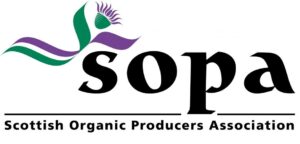Our latest insights on grain and fertiliser markets
GRAIN
With declining global oat production, comes an increasing demand for food products containing oats which will continue to increase world oat trade. While 10 countries still account for 85% of the world’s oat trade, there are new emerging participants.
After nearly ten stagnant years, world oat trade is again trending higher, with global oat imports and exports climbing to new record highs in 2015. This comes despite steadily declining oat production and reduced feed use of oats in many global regions and countries.
Driving the rising oat trade is the increasing demand for food products containing oats, such as breakfast cereals and snack bars, and the healthy reputation oats have with consumers, is prompting food processors to develop new uses for oats.
The decline in oat production is the single largest driver of the record trade in oats, as millers and processors look to non-domestic sources to meet their increasing demand for milling quality oats. We are seeing this in not only conventional oat markets, but also organic and gluten free, as well as oat product (flake, flour and groat) markets.
The long term steady decline in oat production is a direct function of “consistently” low net returns for growers. Other commodities, such as wheat, oilseeds and specialty crops, are providing significantly better returns in most countries and regions, a trend that will remain in place moving forward.
Reduced feed demand for oats, commercially and on farms, has also contributed to the declining trend in oat production and rising world oat trade. Historically, oats were fed on farms in large volumes but declining animal numbers in many countries have reduced the demand for feed oats, and hence, production has declined. Increased use of complex compound feeds has also resulted in sharp declines in oat use in horse feed markets.
The combination of declining feed use of oats and production will continue to see world oat trade trending higher, as millers are left with few options to maintain a steady supply of quality oats.
While global oat trade continues to increase, we have seen little change from the fact that a limited number of countries account for the bulk of the global oat trade, imports and exports. There are however, some emerging trends, as new players enter or increase their participation in the global oat trade, and others take a smaller role.
Total global oat exports climbed to 3.2Mt in 2015, with imports rising to 3.3Mt (Comtrade). This compares to a stagnant period between 2005 and 2013 when imports and exports averaged around 2.75Mt. Since 2005 world oat exports have climbed only 19%, with maize and wheat gaining 47% each.
FERTILISER
Sterling continues to break record lows against the USD/ EUR – pushing replacement stock prices skywards. Prices are available for the current month but with levels set to increase manufactures are unwilling to offer terms any further forward.
Fertiliser prices – set to increase over Q4 due to weakened sterling. With the majority of product being purchase in euros/dollars it is difficult for imported products to compete with UK produced product.
CF launch new AN/compound terms – these prices present a good buying opportunity to growers in a more volatile market. Price increases are likely over the coming months, so getting some cover is advised.
Prices of fertilisers are significantly lower – than the corresponding period in 2015. AN represents a reduction of 25%, nitrogen sulphurs at 24% and the various NPKS products at a range of between 12-18%. These represent a much lower price than farmers’ budgets.
Grain and milk values have recovered – compared with the corresponding period in 2015. Wheat prices on average are circa 12% up. Milk prices have been moving for a number of months and are showing encouraging longer terms signs. Fertilisers continue to represent the best option for maximising crop yields.
